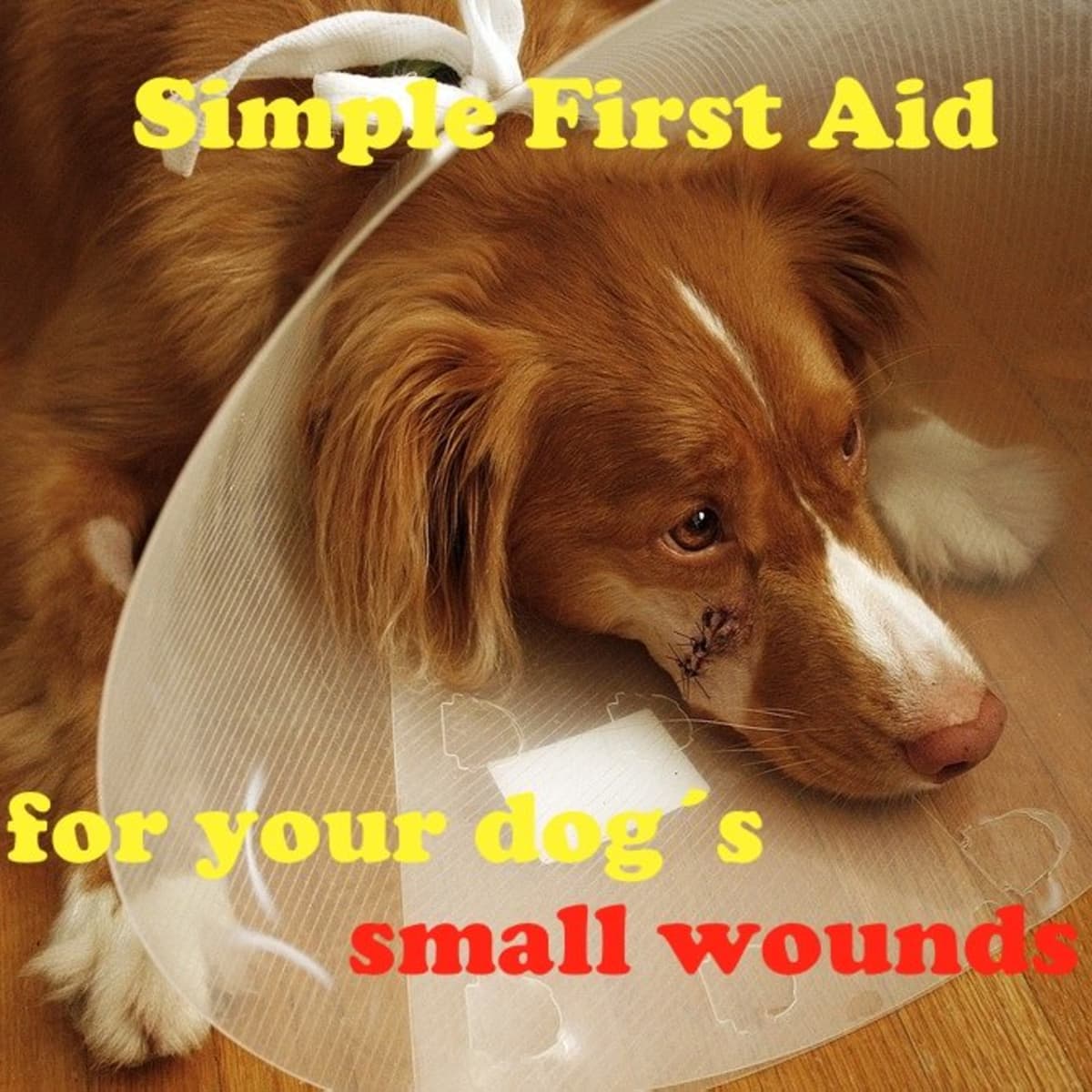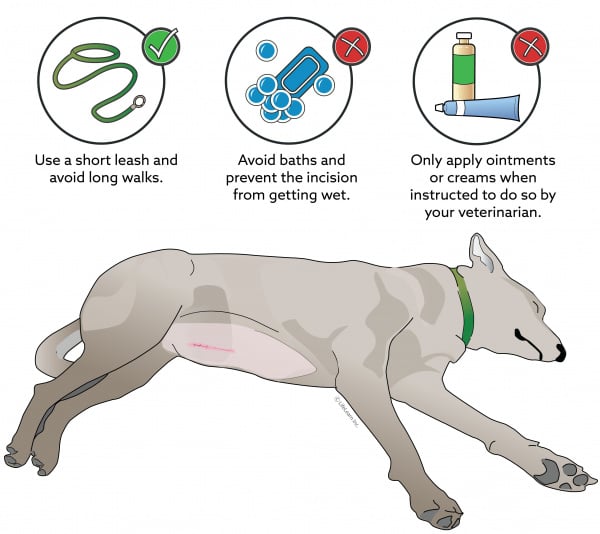
The types of suture and suture patterns used depend on surgeon preference the size of the wound the location of the wound and the size of the animal. For wounds on the feet or lower legs gently dry the area with a clean towel every time your dog comes in from outdoors.

Use clean hands and clean materials when working on your recently neutered dog to keep the surgical site clean and uncontaminated.
How to clean suture wound dog. What should I clean the wound with. Warm tap water is recommended for cleaning most wounds. Warm saline salt solution may also be used.
This may be made by adding approximately one level teaspoonful 5 mL of salt or Epsom salts to two cups 500 mL of water. Surgical incisions must remain clean and dry to heal properly. If your dog has a bandaged wound the bandage should keep it from becoming contaminated.
Should an uncovered wound becomes dirty clean it with a saline solution although tap water will do in a pinch. To clean a dog wound first calm your dog down by petting it and speaking to it in a low calm voice so it doesnt resist your help. If its still bleeding apply pressure to the wound.
Steps for Cleaning and Treating Your Dogs Wound. If the dog is small place them on a table or counter in front of you. For big dogs get down on the ground with them.
Have a second person gently restrain the pet and use a muzzle if necessary. Clip the hair around the area. Skip to Step 3 if the wound is not covered by hair.
Spread the water-based lubricant over. REPEAT THIS WOUND OR INCISION CLEANING PROCESS FOR THE DOG 2-3 TIMES A DAY. Frequent cleanings are necessary to keep the dogs surgical incision or sutured wound clean and free of infection.
Monitor the dogs incision or wound closely. Cleaning the Wound. Here are the fundamental steps for cleaning a dogs stitches.
1 Gently dab away any excess moisture. 2 Use a Bulb syringe to slowly and gently apply warm water. 3 Dab away excess moisture and check to see if the wound is clean.
4 Repeat this process until the wound is clean. APPLY BETA-DINE ONTO THE INCISION OR WOUND. Clean the dogs incision using a generous amount of beta-dine.
The beta-dine can be applied to the incision by simply pouring a little bit onto the incision or wound. Dog owners can also apply a generous amount of beta-dine to a sterile gauze pad and dab the antiseptic onto the dogs wound. The process to disinfect your dogs wounds.
First you should clean the affected area of the dirt and anything else that may be around it. To do so use an antiseptic with iodine or soapy water. This process can be done by pouring the liquid directly on the wound or with an antiseptic gauze pad.
The warm water will also help the dog remain. First put your disposable exam gloves on and if there is fur where your dogs wound is use electric clippers to carefully clip the hair away from the wound. Next use your sterile saline or warm water to gently clean the wound.
You can pour it directly into the wound to flush it and then gently wipe away any debris with clean gauze or towels. To care for a dog with stitches do your best to prevent it from chewing licking or scratching the stitches. If you cant keep the dog from licking or touching the stitches try covering the area with a soft T-shirt or gauze.
Keep the wound clean and check on the stitches several times per day to make sure there are no changes or signs of infection. Pat dry or clean around the incision not directly on it except when necessary by irrigating with saline. Watch for signs of infection of hemorrhage and get medical assistance if required.
Use clean hands and clean materials when working on your recently neutered dog to keep the surgical site clean and uncontaminated. Clean wounds that are properly debrided usually heal without complication. With a primary closure the layers should be individually closed to minimize dead space that might contribute to seroma formation.
The types of suture and suture patterns used depend on surgeon preference the size of the wound the location of the wound and the size of the animal. Yes it is possible dog dissolvable stitches not dissolving. Part of the stitches may be left outside the body.
The fluid of the body may not decompose or dissolve the stitches. That is why stitches remain intact. When the wound is closed then the vet.
Prevent your dog from licking or chewing the wound. This is very important as wounds normally become itchy as they heal. It may be necessary for your dog to wear an E-collar cone for up to 2 weeks to prevent licking and chewing of the wound.
Restrict your dogs activity while the wound is healing. A healthy and healing spay incision will be a straight line on your dogs stomach with raised edges and visible stitching or invisible suturing holding the raw edges together. There will be slight redness and swelling slight bruising and.
WOUNDS AND AVOIDANCE OF IRRITANTS WILL PRODUCE THE BEST RESULT. Use the smallest inert monofilament suture materials such as nylon or polypropylene. Avoid skin sutures and close subcuticularly whenever possible.
Under certain circumstances to secure close apposition of skin edges a topical skin adhesive. Treating An Infected Dog Wound. Home treatment for your dogs wound requires the use of hydrogen peroxide and gauze.
The first step in wound care for your pet would be to clean the wound with hydrogen peroxide. Your pet may not always be amenable to this so you may want to have someone else hold them as you clean the wound. For wounds on the feet or lower legs gently dry the area with a clean towel every time your dog comes in from outdoors.
Wounds on the face should be wiped of debris and patted dry after each meal. And wounds near your dogs hind end should be wiped and dried every time they go to the bathroom.